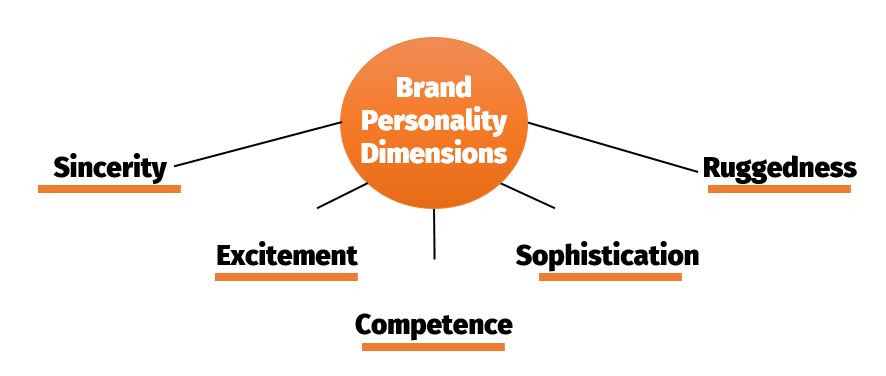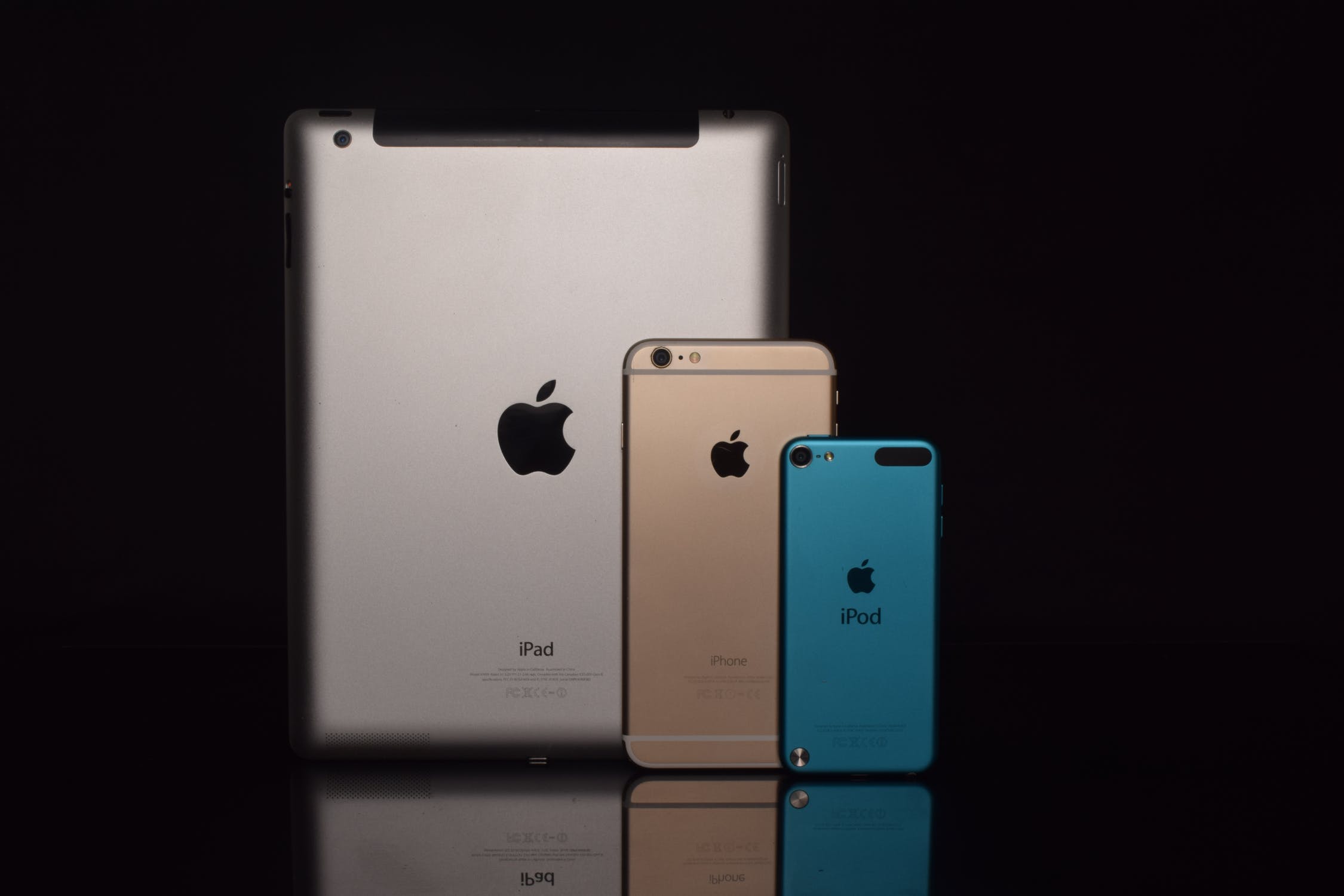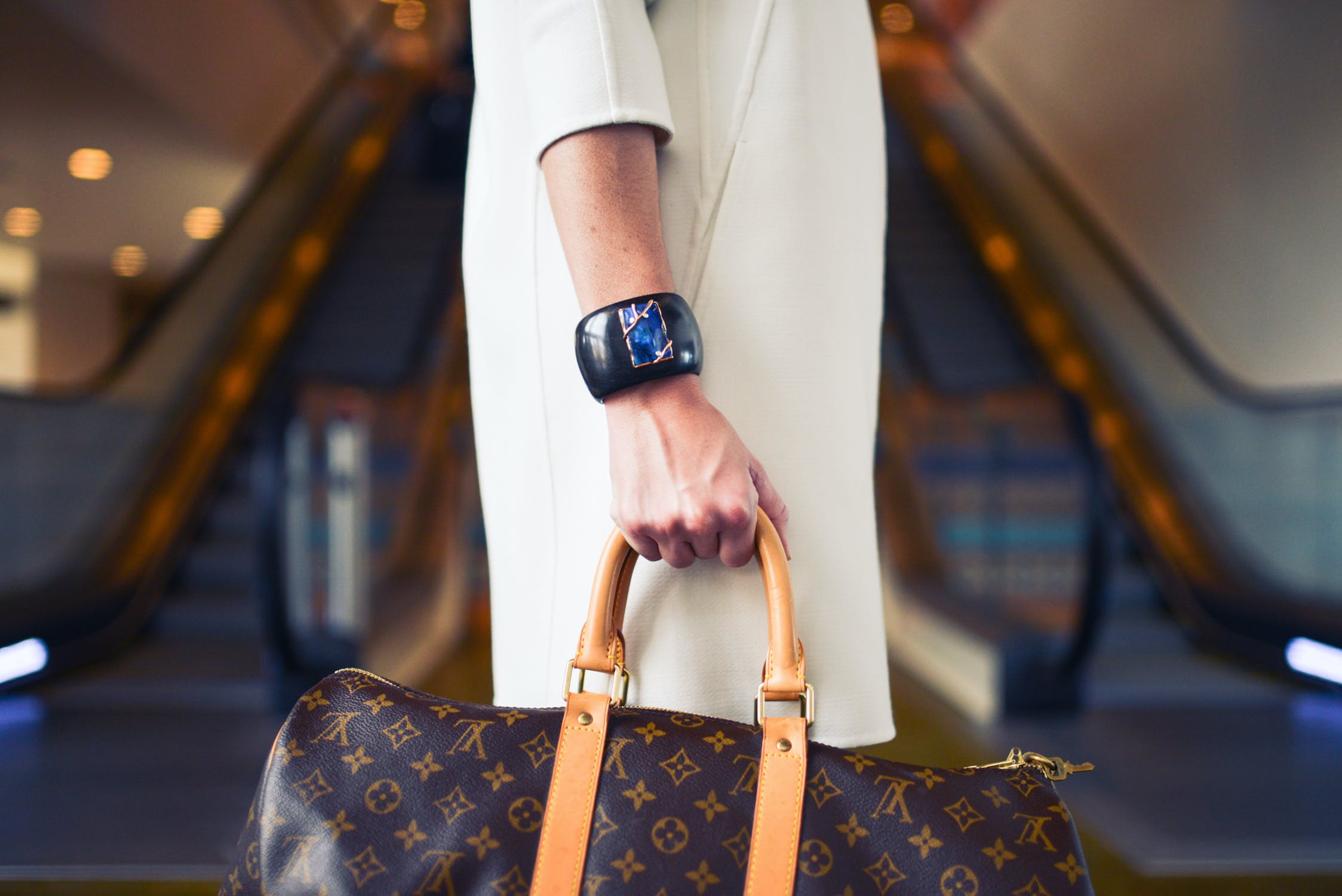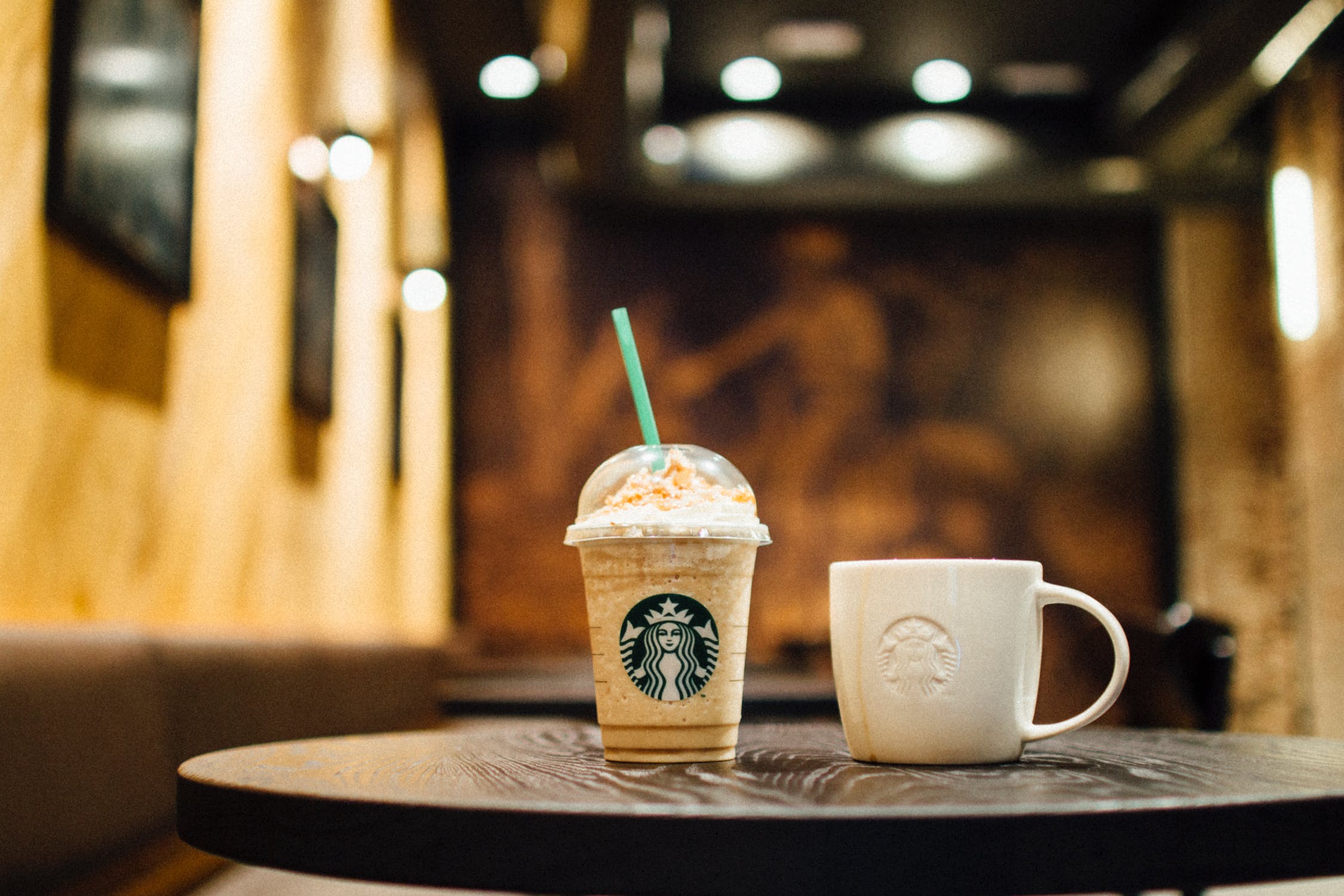Brand Personality
The development of marketing enabled companies to carefully construct brands. And what are brands exactly? Well, brands are set of signifiers which communicate a company’s values, culture, quality of their products and much more. It is therefore built to portray the way how the company wishes to be perceived by their target audience and the general population.
And how are brands developed?
Well, through a continuous integrated process, which involves a series of factors. Some are under the influence of companies, and they can develop them as they wish. Others, not so much. For example, all companies carefully choose their names, their visual identity (e.g. logos, fonts, colors, and designs), the appearance of their online and offline environments, slogans, sounds and music, scents, ambassadors and much more. These visual principles and values are also extended to products and to how services are delivered.
These stimuli are exposed repeatedly to consumers, and as consequence of all these efforts, an image is built. Naturally, consumers with certain personality traits are drawn to brands influenced by to the extent that they can identify with the values and traits which are being communicated by the brands.
(If this was Tinder, you would say that consumers are looking for a “match”).
But the way brands are perceived are not only under their control and under their efforts to build a brand. Consumers also form perceptions of brands based on their contact with products and even by observing other consumers of the brands.
And what is the consequence of all these controlled and uncontrolled efforts?
We end up believing that certain brands are “conservative”, while a competitor may be more “liberal”. That some brands are “sophisticated”, while others are “basic”. And that one might be “tough” and a different one is “delicate”. These set of human characteristics associated with brands, is what Aaker in 1997 defined as brand personality. And to understand it in-depth, similar to how we did for human personality, we need to discuss the dimensions which comprise brand personality.
Aaker’s Brand Personality Dimensions
The most widely-used brand personality model used in marketing was developed by Jennifer Aaker (interesting fact: her father is David Aaker, an Emeritus Professor of marketing at the University of California. He’s also done extraordinary work on branding. Definitely a talented family of marketers!). Anyway, Jennifer published in 1997 a classic paper at the Journal of Marketing Research in which she proposed, tested and validated what later became the most popular brand personality scale in management literature.
Here is the reference for the original paper:
Aaker, J. L. (1997). Dimensions of brand personality. Journal of marketing research, 34(3), 347-356.
Similar to the Big-5 human personality scale, the findings also revealed five robust dimensions: Sincerity, excitement, competence, sophistication and ruggedness.

Alright, after admiring the beautiful figure I made, shall we discuss each dimension of the model?
1. Sincerity
Description: This dimension includes brands that are seen as down-to-earth, honest, trustful and cheerful, for example. Often, sincere brands are viewed this way due to the fact that they follow and communicate ethical practices, their commitment to the community or concerns with consumers.
Sincere brands also often apply clear consumer policies to avoid ambiguities, they establish good customer relationships, and support employees and the social and natural environment. Sincere brands are rarely involved with scandals or controversial situations. It is exactly the contrary. They understand and act as being part of a larger collective societal group. As consequence of some or all of such practices, they are viewed by consumers (or society as a whole) as being sincere.
Sincere brand case: Patagonia
Patagonia is an American outdoor clothing brand, founded in 1973 by Yvon Chouinard. Yvon always loved the outdoors. He was a rock climber, alpinist, surfer, enjoyed fly-fishing and kayaking. And importantly, he was also an environmentalist, strongly worried about global issues and their impact on the natural environment.
The success of Patagonia as a company is also followed by its engagement beyond the market, acting as an important voice for environmental activism. Apart from raising awareness of important causes, they have actually developed successful sustainable programs, such as “Worn wear”. In this program, consumers can sell back their Patagonia clothes to the company. The company will then repair, recycle and re-sell them online (consumers can buy second hand products cheaper on the “Worn wear” site), extending the product lives and making their products more accessible to individuals with lower income, for example.
Importantly, their communications always adopt easy and accessible language, with animations and graphs that allow an immediate understanding.
Overall their products (jackets and shirts, for example), resemble the design and language used on their site: they are generally simple, clean and down-to-earth. For example, when describing their company values, they state:
“Our values reflect those of a business started by a band of climbers and surfers, and the minimalist style they promoted”.

Furthermore, when describing the “Worn wear” program, the company states:
“One of the most responsible things we can do as a company is make high-quality stuff that lasts for years, so you don’t have to buy more of it. Buying a used garment extends its life on average by 2.2 years, which reduces its carbon, waste and water footprint by 73%”.
The interesting thing about it, is that in no case it wounds superficial nor fake, as many companies would often tend to do. In the case of Patagonia, the message really does come through, leaving a genuine impression of a sincere company.
2. Excitement
Description: This dimension involves brands which are perceived as being imaginative, up-to-date, inspiring, edgy and spirited. Thus, often these brands often use colorful logos, uncommon fonts, portray themselves in unexpected and exciting places and situations.
You may also find them frequently being exposed in sports competitions and large scale music events. Their team of marketers do their best to promote them as organizations that “think outside of the box” to inspire and excite consumers.
Exciting brand case: Red Bull
Well, one of the best examples is the Austrian energy drink brand Red Bull. Founded in 1984 by Dietrich Mateschitz and Thai businessman Chaleo Yoovidhya, the company is the global leader and currently sells over 7.5 billion cans per year. And why is it an exciting brand? Well, first, because the brand “Red Bull” itself goes far beyond signifying a drink. It has become synonym for an extreme/exciting attitude or way of life.
Red Bull has its main strategy to associate itself with extreme and exciting sports. Following the passion of Mr. Mateschitz for motor racing, the company acquired a Formula 1 team in 2005 and in 2006 entered a second F1 team, named Toro Rosso (“Red Bull”, in Italian). Since then, drivers and the brand are shown globally and are associated with the peak of motor sports in extreme conditions and highly emotional moments (the Red Bull F1 team has won 4 constructors and 4 drivers championships since then).
Apart from the F1 world, Red Bull does a series of public appearances and sponsorships of events and athletes which are always related to extreme sports or experiences. These may include: sky-diving, dirt-bikes, extreme sailing, drift-shifters, surfers, skiers, freeskiers, skateboarders, BMX riders and, obviously, go-kart drivers.

Consequence? After years of being associated and portrayed in such manner, it is no wonder that Red Bull is seen as an exciting global brand that represents much more than an energy drink.
***
And which other brands are also exciting? Given the rationale I describe, it should not be a surprise to think that other companies that apply a similar strategy are viewed equally as exciting. For example, Google (web solutions), Nike (sports apparel), Tesla (car manufacturer), Pepsi and Coca-Cola (soft drink) and GoPro (cameras).
3. Competence
Description: Competent brands are the ones which are primarily seen as being reliable, responsible, intelligent, and efficient. These consumer perceptions are often based on how well a product or service performs, and how the organization behaves in society and in the market.
Therefore branding is commonly displayed with strong and thick fonts, colors which convey trust (blue and white, for example), their ambassadors tend to be knowledge of the product or be perceived as trustworthy. Other common practices include a tendency to highlight the quality of suppliers and efficient production practices, for example.
Competent brand case: Apple
A wonderful example of a competent brand is Apple. Steve Jobs, its famous founder, had an astonishing work ethic that often went beyond reasonable behavior. His main biography (simply titled “Steve Jobs”), published in 2011 by Walter Isaacson, describes him as a men that was often controlling, passionate, highly driven and temperamental, but that would wake up and go to sleep thinking of how to achieve brand and a product perfection in every possible sense.
The result was the development of innovative products, not only in terms of design, but importantly in terms of operation and performance. Especially after his return to the company in 1996, Apple computers and laptops quickly became the “must go to” for professionals in many areas such as architecture, design and finance that required reliable software. Furthermore, Apple’s operational system became famous for its robustness against viruses and fast loading speeds.
Finally, Apple expanded to encompass software and hardware that could cover as much as possible of consumers’ online experience, beyond laptops and desktops. Thus, they also launched iTunes (2001), iPod (2001), iPhone (2007), iPad (2010). Quickly, they became the main brand to solve multiple consumer problems when it came to online solutions. Therefore the combination of constant technological innovation, expansion to other digital branches, high perceived quality and positive customer experience made Apple an extraordinary marketing case of a brand that established itself as competent.

***
And what about you, my friend? Would you also perceive Apple as a competent brand? Would you also consider, for example, Intel (telecommunications), Microsoft (software), Volvo (vehicles), UPS (distribution), General Electric (electronics), Deutsche Bank (banking), and Allianz (insurance) as competent brands?
4. Sophistication
Description: Sophisticated brands are the ones perceived by consumers as upper class, romantic, charming, pretentious and glamorous. Thus, it is no surprise to imagine that sophisticate brands are commonly found across luxury industries and on high priced brands (for their product categories) across other industries.
Applications of sophisticated branding can vary across a multitude of industries, ranging from fashion and accessories (watches and clothes), to cars, medical equipment and food and dining. It is also very common in feminine brands or female targeted brands. In order to express sophistication, brands often adopt delicate and thin fonts, simple designs, light colors and are associated with charming and upscale environments. Also, they are often portrayed in upscale contexts (Luxury hotels, European cities and modern companies).
Sophisticated brand case: Louis Vuitton
Louis Vuitton is a brand of high end fashion (dresses, shirts, pants, skirts), products (shoes, bags) and accessories (watches, belts), founded in in France in 1854 by (guess who?) Louis Vuitton himself. It is a brand which is quite easy to spot, given almost all of their products display the famous LV design, which has become a symbol for status and purchase power. According to Bloomberg in 2012, the brand was valued in almost 26 Billion Dollars.
And what makes it a sophisticated brand? Well, a set of factors. For example, they position themselves as upper-class and glamorous. This means, their products are high priced (an “All Set” bag can cost as much as $5,700), they use international models, celebrities and Hollywood stars as endorsers (Jennifer Lopez, Madonna, Angelina Jolie, Emma Stone, Alicia Vikander, Léa Seydoux and many others!), products are displayed in congruence with other high-end products and in luxurious scenarios. Moreover, in their ads, the models are frequently portraying status and power.
Furthermore, you do not find their products simply everywhere and distribution is important to communicate status. So their products are sold in very selective high-end department stores (Saks, Nordstrom, Neiman Marcus, and Bloomingdales), where the fancy ambience adds to the perception of the products. Apart from that, their products are also found on their official websites and their own retail shops (which also often display “gold-like colors”, shining lights, well dressed employees and a general soft-sell approach).
Therefore, the combination of all of these factors makes Louis Vuitton, without a doubt, a sophisticated brand.

So which other brands would you also consider to be sophisticated?
Perhaps Rolex (watches), Mercedes (car manufacturer), Gucci and Chanel (fashion), Emirates (airline), Mandarin Oriental and Rosewood (hotels) and Moët & Chandon (champagne) would be some of them?
5. Ruggedness
Description: Finally, this dimension includes brands that are seen as outdoorsy, tough, masculine and western, for example. For this reason, rugged brands have a tendency of being male oriented, of developing brand concepts which contain dark colors (often black, gray, navy blue, green), strong and thick fonts, less fine details and they portray their products in outdoor (mountains, rivers, farms, oceans, cliffs) and extreme scenarios (heavy rain, foggy weather, snow).
The general aim is to convey the idea that the product is resistant, durable and made for people who are brave, willing to take risks, with low fear and that do not wish to have an ordinary life.
Rugged brand case: Patagonia
Wait a minute… Patagonia again??? I told you before that Patagonia was a sincere brand, right? Good, because it is. But there is something important to mention here:
Brand personality, similar to human personality, is not simply the result of one single dimension, but of their combination of their varying magnitudes.
For example, one person cannot be classified simply as being “neurotic” or “agreeable”. Alone, the dimensions do not define one’s personality. Instead, the personality of each individual is the result of the combination of the different magnitudes of each of the Big 5 Model dimensions. Remember? Well, the same applies to brands. The perception of a brands personality often includes more than one dimension.
And one great example is, again, Patagonia. Yes, as previously discussed, they are a sincere brand. But it does not stop there. Perhaps they are most known for being a rugged brand. First, due to the obvious: they produce outdoor clothing. The “outdoor” contexts is per nature (I love puns) a rugged context. Hiking, climbing rocks, crossing rivers or camping are activities that requires a certain level of roughness, risk, strength and simplicity, which is characteristic of rugged brands.
In their ads, website, social media and other channels, Patagonia vastly explores the rugged aspect of their brand. Products are shown in the outdoors, there is an emphasis of the product performance (durability and quality in extreme situations, for example) and users are often portrayed as being brave or risk-takers. Moreover, they use slogans such as “We’ve got your back”, “It’s in your nature” and “Conquer extreme conditions”.

So there you go: Patagonia is a wonderful example of a sincere and rugged brand (Just like Apple, apart from being competent, could also be seen as sophisticated).
***
Which other brands would you consider to have a rugged personality?
How about Marlboro (cigarettes), Land Rover and Jeep (car manufacturer), Harley Davidson (motorcycles), Timberland (leather boots), Kathmandu, Jack Wolfskin (outdoor apparel), and Gibson and Taylor (guitars)?
Curious to Know More?
To finish, I would like to share a few publications that have applied the model, criticised it or provided insights as to how to expand it. After all, all of these discussions would go beyond the scope of this article:
-
- Austin, J. R., Siguaw, J. A., & Mattila, A. S. (2003). A re-examination of the generalizability of the Aaker brand personality measurement framework. Journal of Strategic Marketing, 11(2), 77-92.
- Ekinci, Y., & Hosany, S. (2006). Destination personality: An application of brand personality to tourism destinations. Journal of travel research, 45(2), 127-139.
- Geuens, M., Weijters, B., & De Wulf, K. (2009). A new measure of brand personality. International Journal of research in Marketing, 26(2), 97-107.
- Siguaw, J. A., Mattila, A., & Austin, J. R. (1999). The brand-personality scale: An application for restaurants. Cornell Hotel and Restaurant Administration Quarterly, 40(3), 48-55.
- Thomas, B. J., & Sekar, P. C. (2008). Measurement and validity of Jennifer Aaker’s brand personality scale for Colgate brand. Vikalpa, 33(3), 49-62.





